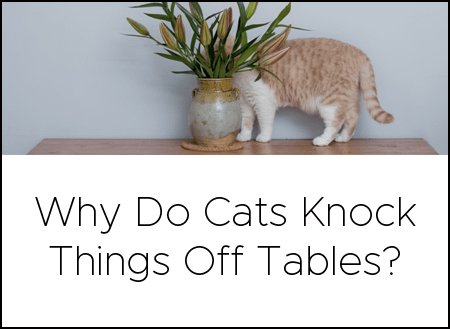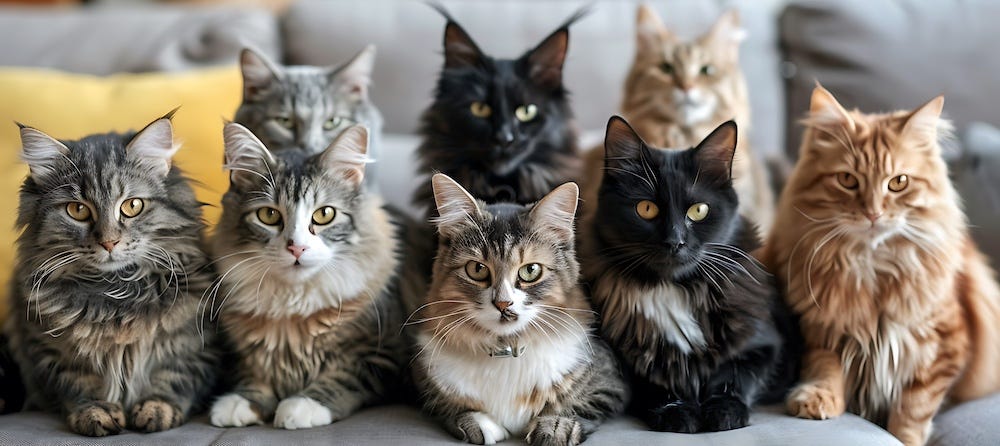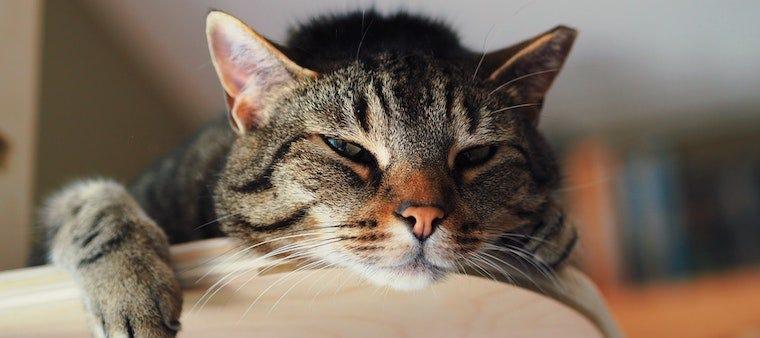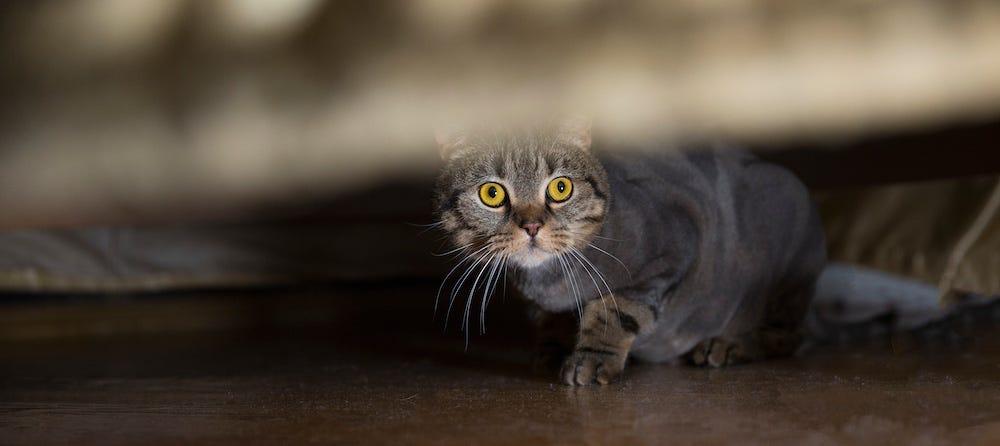Does your cat drag you to the kitchen and announce, in impeccable cat English, that he's starving—but then refuse to eat the meal you have lovingly prepared? Alternatively, does he nudge his food out of the bowl and then devour it off the floor? Does he leave a mess in his wake, without tipping you for your trouble? Worst of all, does he threaten your other cats when they're eating, as if to say, "If I can't eat, then no one can"?
You may have resigned yourself to your cat channeling his inner jerk at mealtimes, but perhaps something other than a personality disorder underlies his crabbiness. Have you considered...whisker fatigue? Whisker fatigue may sound like something dreamed up by kitty hypochondriacs, but evidence suggests that it's quite real.
Cats' whiskers are thick hairs whose technical name is vibrissae. They are incredibly sensitive at the tips, where each has a sensory organ called a proprioceptor. When the proprioceptors touch an object, vibrations travel down the whiskers to follicles that are rooted in nerve-rich areas of your cat's body—mostly in his face, but also behind his front paws. (Author's note: I've been searching fruitlessly for the whiskers behind my own cat's paws. There must be something wrong with him.)

You probably know that whiskers help your cat negotiate tight spaces, but they also help him get around in the dark through touch and by sensing air currents caused by objects in motion. In fact, whiskers have many functions you may never have imagined.
To perform these essential kitty tasks, whiskers send complex messages to your cat's nervous system. To determine the size, location, and texture of objects, even in the dark, your cat drags his whiskers over the surfaces of those objects. Even when his whiskers don't touch anything, they can still detect the air currents created by moving things—including predators and prey. In fact, the acute sensitivity of a cat's whiskers seems to be partly responsible for the myth that cats can see in complete darkness.
As important as whisker sensitivity is to your cat's survival, it can translate into sensory overload when his whiskers touch too many things in the course of his day, especially unavoidable things like the sides of his food and water bowls. As hungry as your kitty is, the sensation of constantly bumping all 24 (give or take) of the sensitive whiskers in his muzzle against the sides of your too-deep cat food bowls may cause him whisker fatigue—pain and stress every time he opens his mouth to eat.
Luckily, there's an easy solution for whisker fatigue. Switch out your cat's narrow and small food dishes with wide, shallow, or even flat bowls. Make sure the dishes are wide enough to accommodate your cat's whiskers. Steel, glass, or ceramic bowls are best; plastic bowls should be avoided, because, independent of the whisker fatigue problem, with every scratch, they can become magnets for bacteria.
The big name in whisker fatigue is Dr. Catsby's Food Bowl for Whisker Relief ($19.99). It's wide and shallow and made of stainless steel, and comes with a washable no-slip mat to put under the bowl. Cat bloggers seem to swear by it, though other bowls marketed toward licking whisker fatigue are available, such as FelliP's Oblik (around $30), in its Lordly Puss line of pet bowls. (Different models by the same maker, such as Kaleido, get lower marks on Amazon than Oblik does.)
 Felli Pets Oblik Lordly Puss Bowl
Felli Pets Oblik Lordly Puss BowlAnd don't forget that your cat needs a wide water dish, too...something he can get his whole head into.
Next time Kitty drags you to the kitchen, demanding that you feed him but then refusing all seven of your offerings as you crack open can after can, he might not be showing you who's boss. When he bullies the other cats, he might not be trying to intimidate them. He might very well be hungry, and happy to eat the cat food in your cupboard (except that weird off-brand you got that one time), but not starving enough to jam his head into a narrow bowl.
Instead, find him a flat plate and, if you're not too proud, beg for his forgiveness.
Of course, if whisker fatigue turns out not to be the problem, perhaps he is a difficult one after all and enjoys playing mind games. But you still love him, right?









